Raoul Wallenberg’s Office in Second Life
ONLINE Project
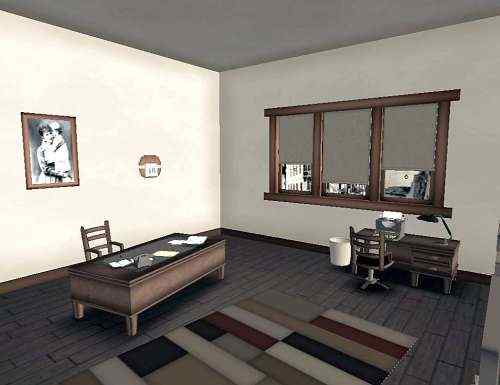
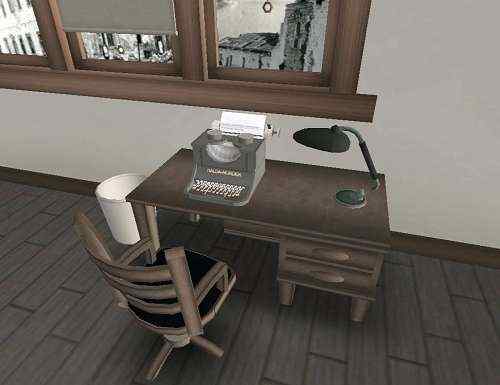
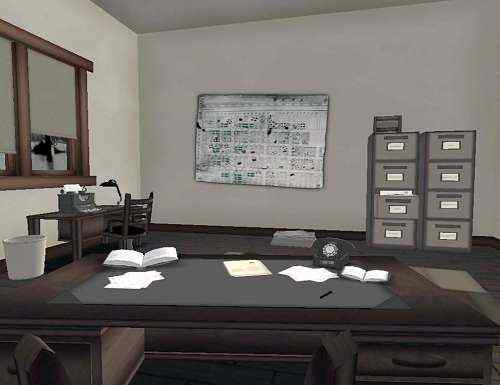
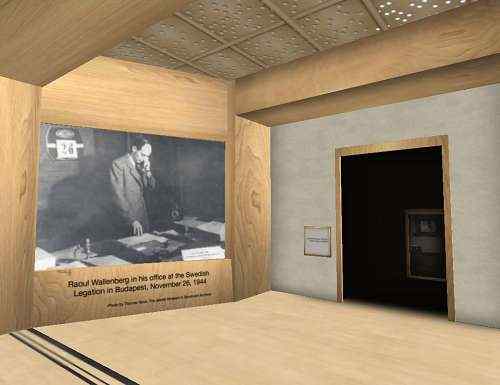
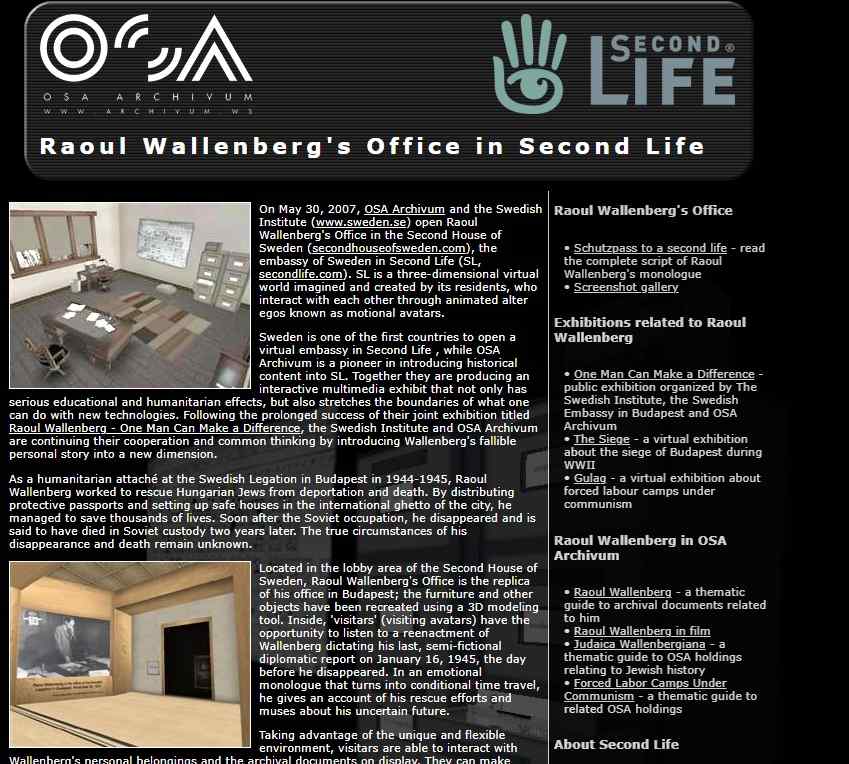
On May 30, 2007, OSA Archivum and the Swedish Institute (www.sweden.se) open Raoul Wallenberg’s Office in the Second House of Sweden (secondhouseofsweden.com), the Embassy of Sweden in Second Life (SL, secondlife.com). SL is a three-dimensional virtual world imagined and created by its residents, who interact with each other through animated alter egos known as motional avatars.
Sweden is one of the first countries to open a virtual embassy in Second Life, while OSA Archivum is a pioneer in introducing historical content into SL. Together they are producing an interactive multimedia exhibit that not only has serious educational and humanitarian effects, but also stretches the boundaries of what one can do with new technologies. Following the prolonged success of their joint exhibition titled Raoul Wallenberg – One Man Can Make a Difference, the Swedish Institute and OSA Archivum are continuing their cooperation and common thinking by introducing Wallenberg’s fallible personal story into a new dimension.
As a humanitarian attaché at the Swedish Legation in Budapest in 1944–1945, Raoul Wallenberg worked to rescue Hungarian Jews from deportation and death. By distributing protective passports and setting up safe houses in the international ghetto of the city, he managed to save thousands of lives. Soon after the Soviet occupation, he disappeared and is said to have died in Soviet custody two years later. The true circumstances of his disappearance and death remain unknown.
Located in the lobby area of the Second House of Sweden, Raoul Wallenberg’s Office is the replica of his office in Budapest; the furniture and other objects have been recreated using a 3D modeling tool. Inside, “visitars” (visiting avatars) have the opportunity to listen to a reenactment of Wallenberg dictating his last, semi-fictional diplomatic report on January 16, 1945, the day before he disappeared. In an emotional monologue that turns into conditional time travel, he gives an account of his rescue efforts and muses about his uncertain future.
Taking advantage of the unique and flexible environment, visitars are able to interact with Wallenberg’s personal belongings and the archival documents on display. They can make copies of these or get more information about them through explanatory notecards and external web links, download the audio stream to their own computers, or sit at Wallenberg's desk and instantly discuss their impressions with other visitars.
The documentation of the project (closed down in 2013) is available at the following link: http://w3.osaarchivum.org/secondlife/